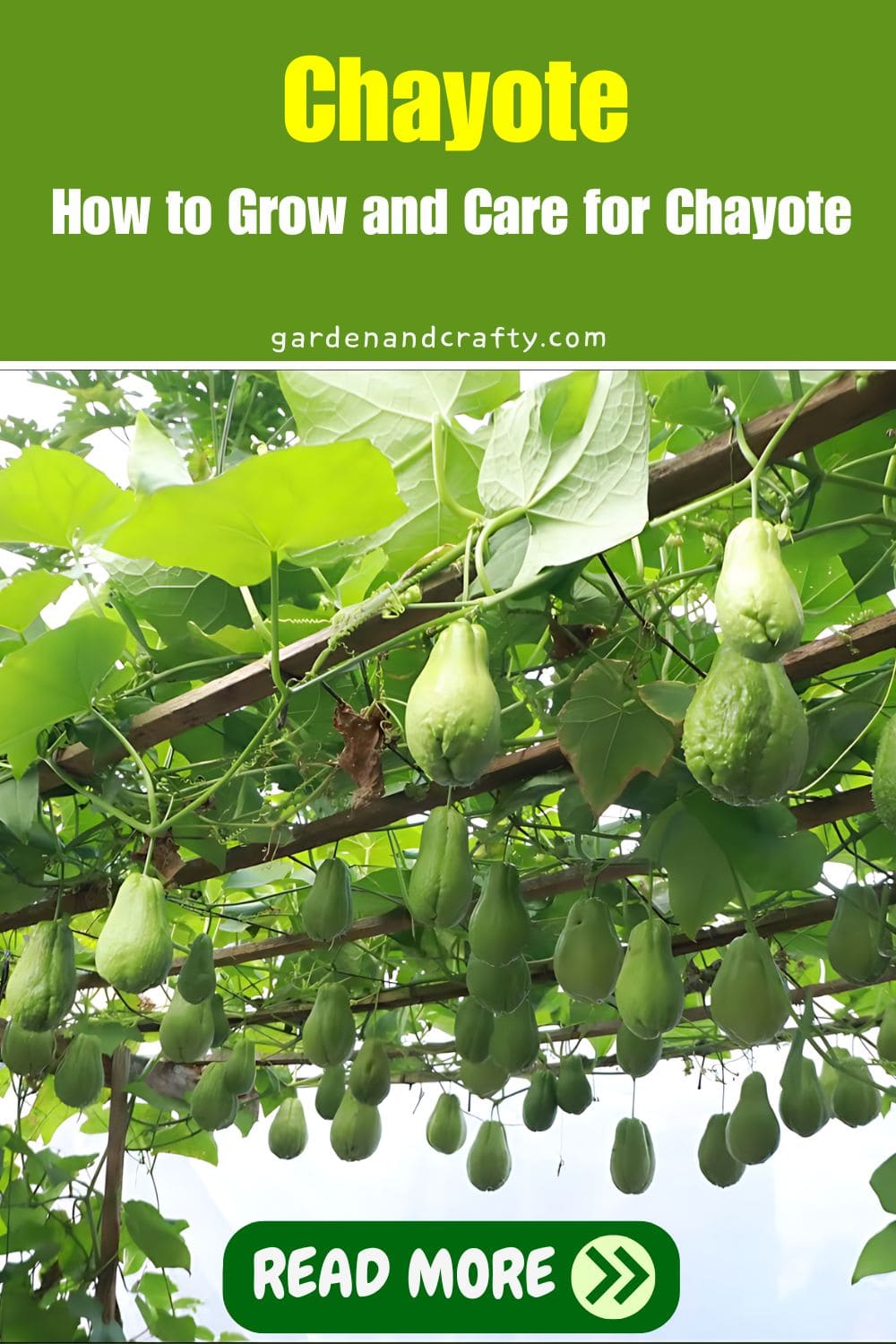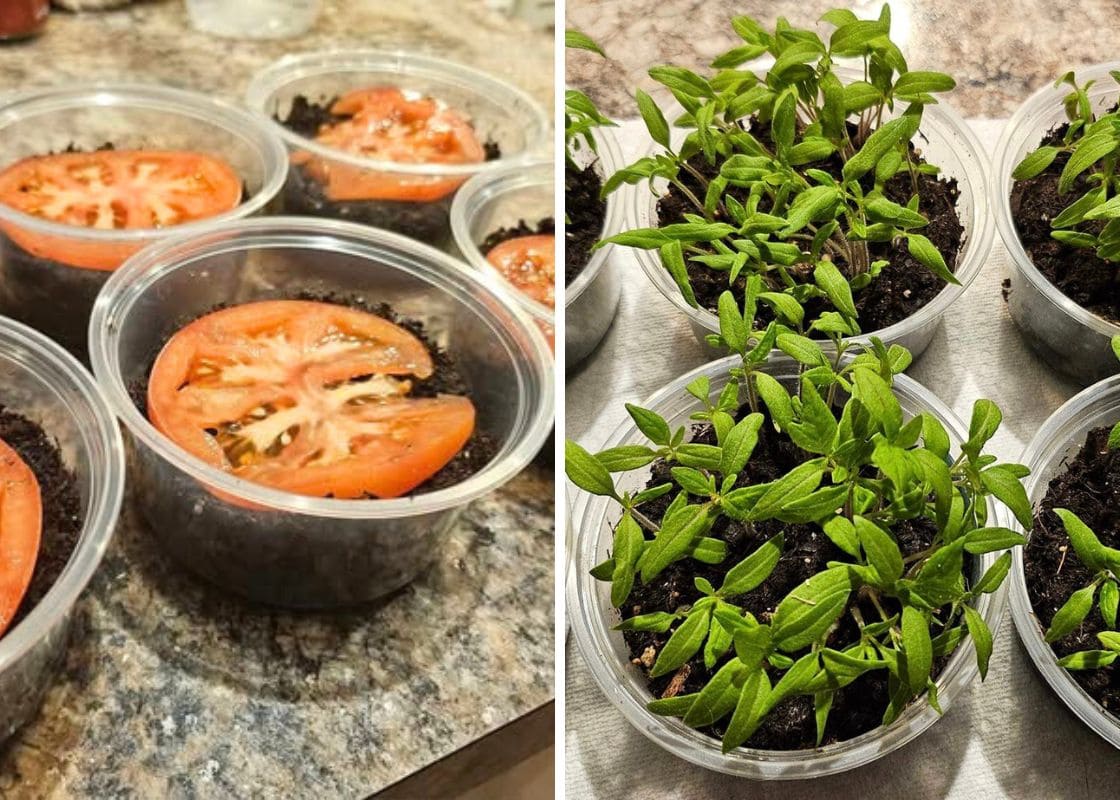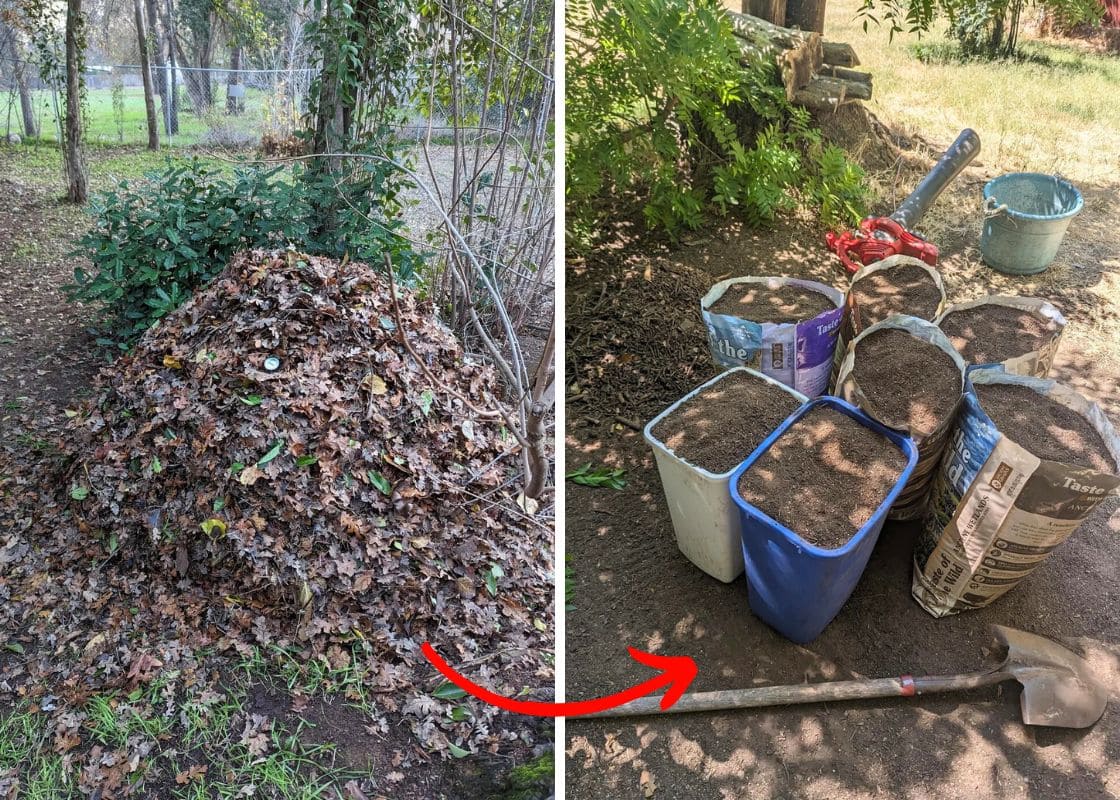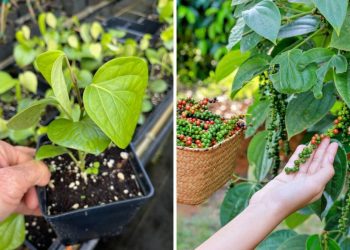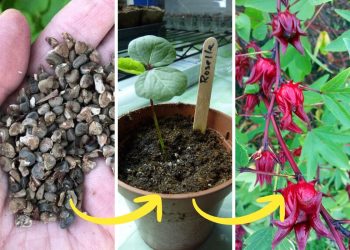Are you passionate about the yummy taste of chayote? This bright green, pear-shaped vegetable offers a great flavor that’s a cross between a cucumber and an apple.
But chayote isn’t just about its fruit; every part of this plant is edible. While it requires some time and effort to grow, the end result is worth it.
Ready to embark on this exciting gardening journey? Read on to learn how to grow and care chayote for the bountiful crops.
About Chayote
Chayote (Sechium edule), commonly known as sayote, is a wonderfully versatile vegetable that belongs to the gourd family, Cucurbitaceae.
This plant yields a delightful, pear-shaped fruit with green or white skin, boasting a mild and slightly sweet flavor that can enhance many dishes.
Chayote vines are impressive, reaching up to 50 feet in length, with fruits that can weigh as much as 1.2 kg.
Its large, heart-shaped leaves and small, non-showy flowers are essential for fruit production.
Thriving in regions with temperatures between 55-70°F and annual precipitation of 1500-2000 mm, chayote is a robust plant that brings a touch of nature’s bounty to your garden.
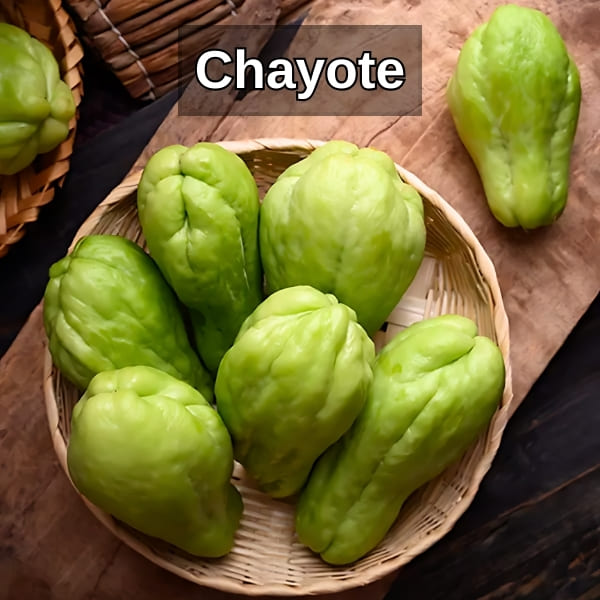
Benefits of Chayote
Chayote is a good source of vitamins and minerals. A 203g serving provides fiber (4g), carbs (9g), protein (2g), vitamin C (26%), vitamin B9 (47%), vitamin K (10%), and more.
Compared to apples, melons, and papayas, chayote ranks in the top 3% of foods low in calories.
Fruit and shoots of chayote are useful in wines, pies, kimchi, pickles, and candies. The vines are crafted into versatile bags and hats.
Its low calorie and high fiber content support weight loss, and its leaves help dissolve kidney stones and treat arteriosclerosis and hypertension.
Chayote is also used in cosmetics for its anti-aging properties and effectiveness in reducing wrinkles.
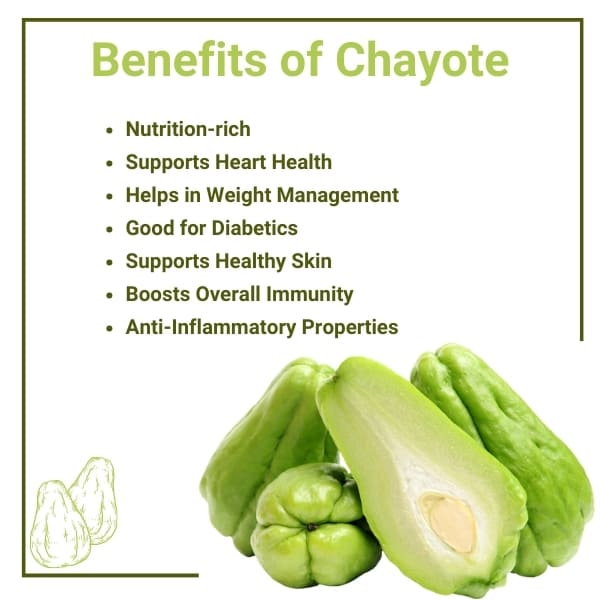
Propagation
Chayote is propagated by planting the entire mature fruit at a 45-degree angle with the shoot downward.
Space plants 7-11 feet apart and use a trellis about 6 feet tall for support.
Choose green, non-spiny fruits with short internode vines and good adaptability. Fully matured fruits with hard peels are ideal for propagation.
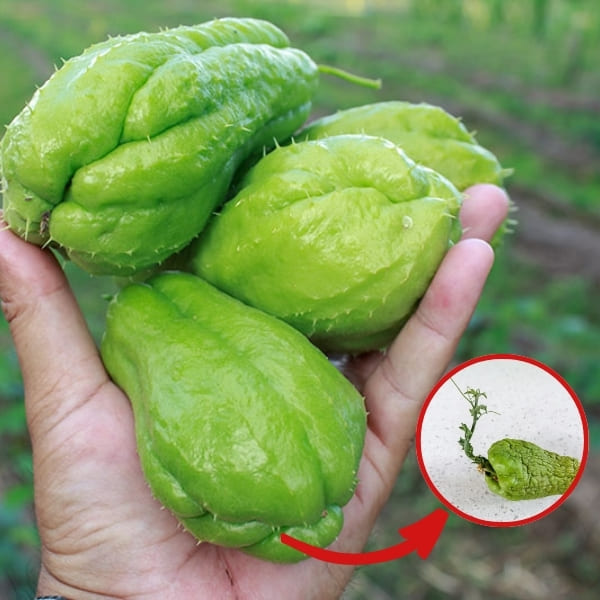
How to Grow and Care for Chayote
How to Grow Chayote
1. Preparation
Planting Site
Choose a spacious spot with full sun or partial shade.
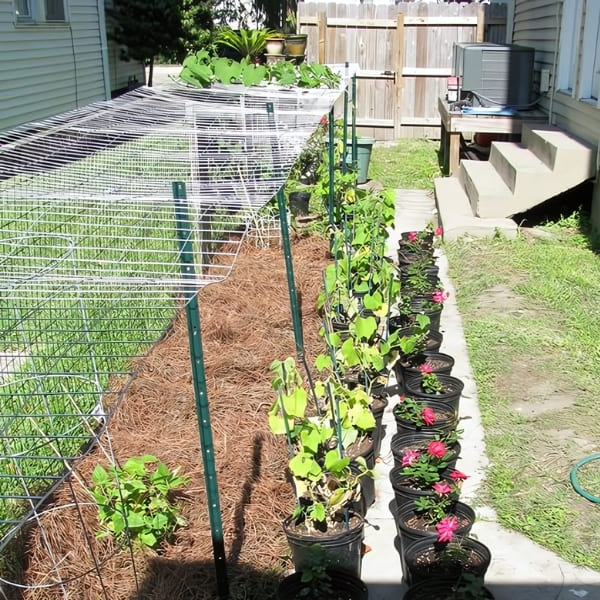
Time
Plant after the last frost when the soil reaches at least 65°F.
Chayote Seeds
Use whole chayote squash in good condition, free of blemishes.
Trellis
Prepare a trellis to support the climbing vines.
2. How to Grow Chayote
Dig a hole 4 to 6 inches deep. Place the squash at a 45-degree angle, wide side down.
Cover with soil without burying it too deeply to prevent rot. Space plants at least 10 feet apart.
Tips: Boost productivity by planting chayote alongside pumpkins, peppers, and squash.
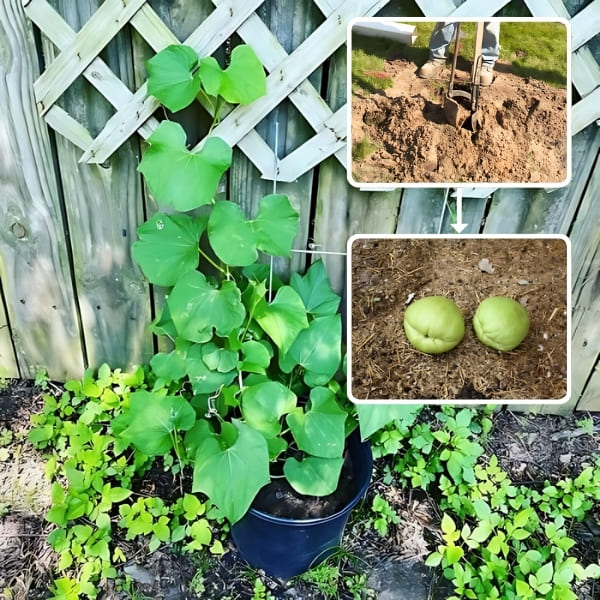
How to Care for Chayote
Soil and Water
Plant chayote in nutrient-rich, well-draining soil with a pH of 6.0-6.8. Water regularly, ensuring not to overwater to maintain healthy growth.
Light
Chayote thrives with 6 to 8 hours of sunlight daily.
Temperature and Humidity
This plant is ideal for tropical and subtropical climates. In Zone 8, prune and mulch heavily for overwintering. In Zone 7, grow chayote as an annual if planted early.
Pruning
Remove dead or damaged leaves to promote bushier growth.
Fertilizer
Apply a balanced or low-nitrogen fertilizer every 6-7 weeks to keep your chayote thriving.
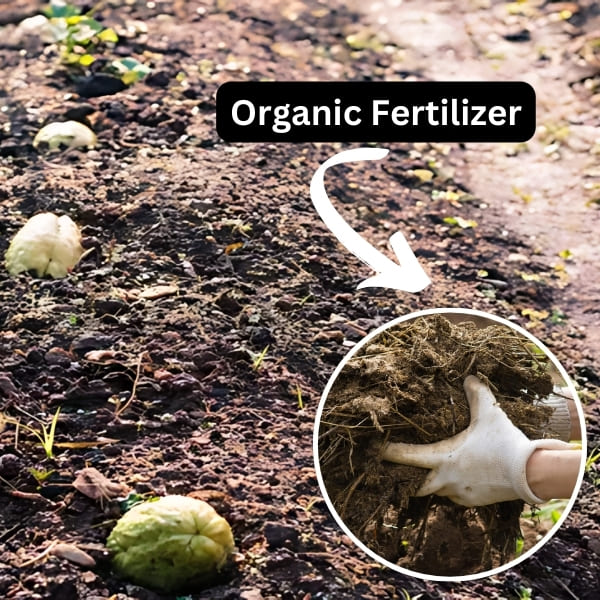
Common Problems
Squash Vine Borer: Prevent with trap crops and row covers.
Aphids: Remove with water, organic soap, or neem oil.
Powdery mildew: Water at the soil level in the morning.
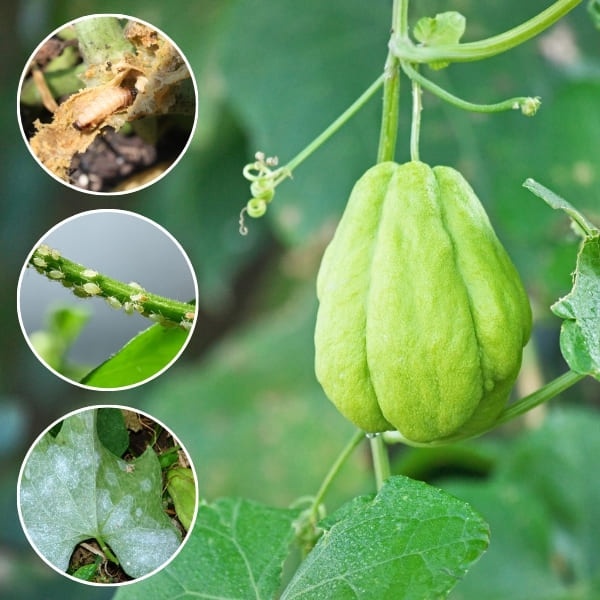
Harvest
The ideal time to harvest chayote is from late summer to early fall when the fruits are bright green, 4 to 6 inches long, and have soft skin.
Ensure you pick them promptly to avoid the development of hard skin or wrinkles, maintaining their optimal taste and texture.
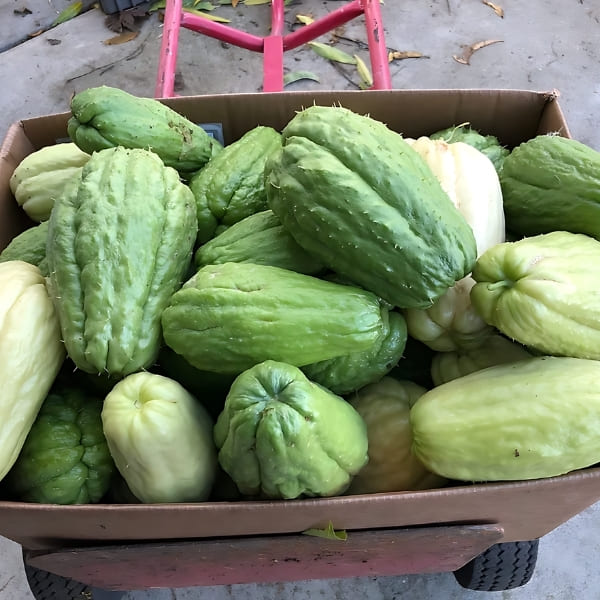
Preservation
Dried Chayote
Soak it in tap water for 40 minutes. Then, fry it with onions, tomatoes, and a pinch of salt for 30 minutes.
This method extends the shelf life of chayote to at least 3 months, while also boosting your intake of dietary fiber, vitamin C, and zinc.
Freezing Chayote
Select uniformly colored, firm chayote fruits. Store them at 50-60°F with 90% humidity in a closed container or plastic bag.
This method preserves chayote in the fridge for up to 1 month, ensuring you can enjoy its freshness longer.
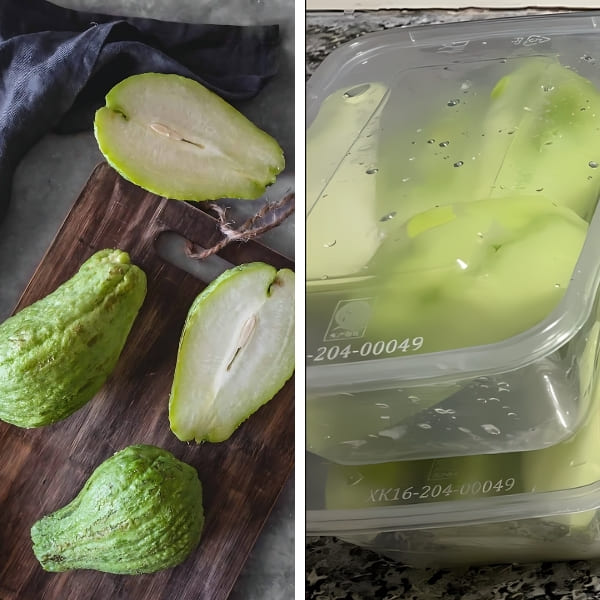
To continue learning more about gardening tips and exploring fascinating stories, stay connected with us. Keep discovering the world of gardening with our latest updates and insights!
